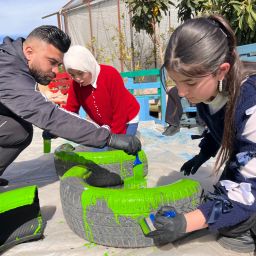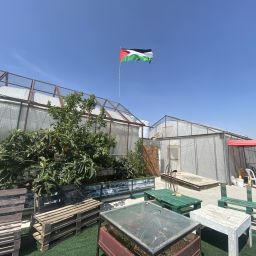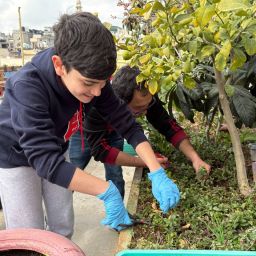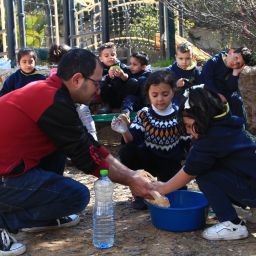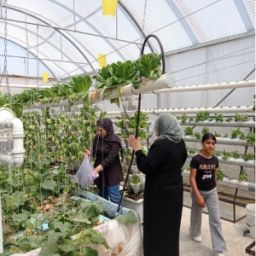Winter Environmental Camp
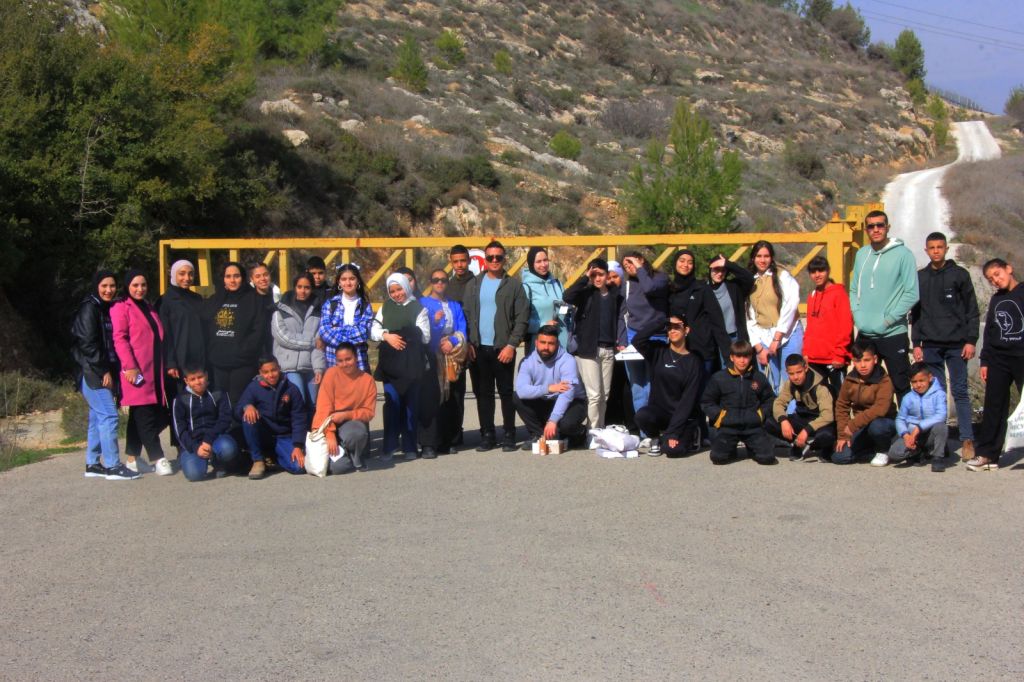
The Health and Environmental Unit at Lajee Center launched the Second Winter Environmental Camp, targeting children from Aida and Al-Azza refugee camps. The initiative aims to enhance environmental awareness and strengthen children’s connection to nature through interactive and creative activities.
The five-day camp combined educational, creative, and recreational activities designed to develop participants’ skills and highlight their talents.
On the first day, the children were introduced to the camp’s objectives, which include engaging younger generations in the Environmental Club, developing their environmental skills, discovering their environmental talents, and strengthening their bond with nature through hands-on activities.
To foster interaction and teamwork, participants engaged in group games designed to break barriers and encourage cooperation. Additionally, they expressed their creativity by crafting artworks that reflect Palestinian identity, including string art representations of the Palestinian map and the iconic character Handala, using nails and wool thread. They also created recycled plant pots from plastic bottles, promoting eco-friendly practices.
On the second day, the focus shifted to educational and artistic activities, where children crafted wooden frames and bases for plastic bottle recycling, transforming them into plant pots. These creations were then filled with plants, reinforcing the value of handmade environmental projects. Furthermore, participants engaged in dialogue sessions, learning about Palestinian national symbols and their inspiring stories.
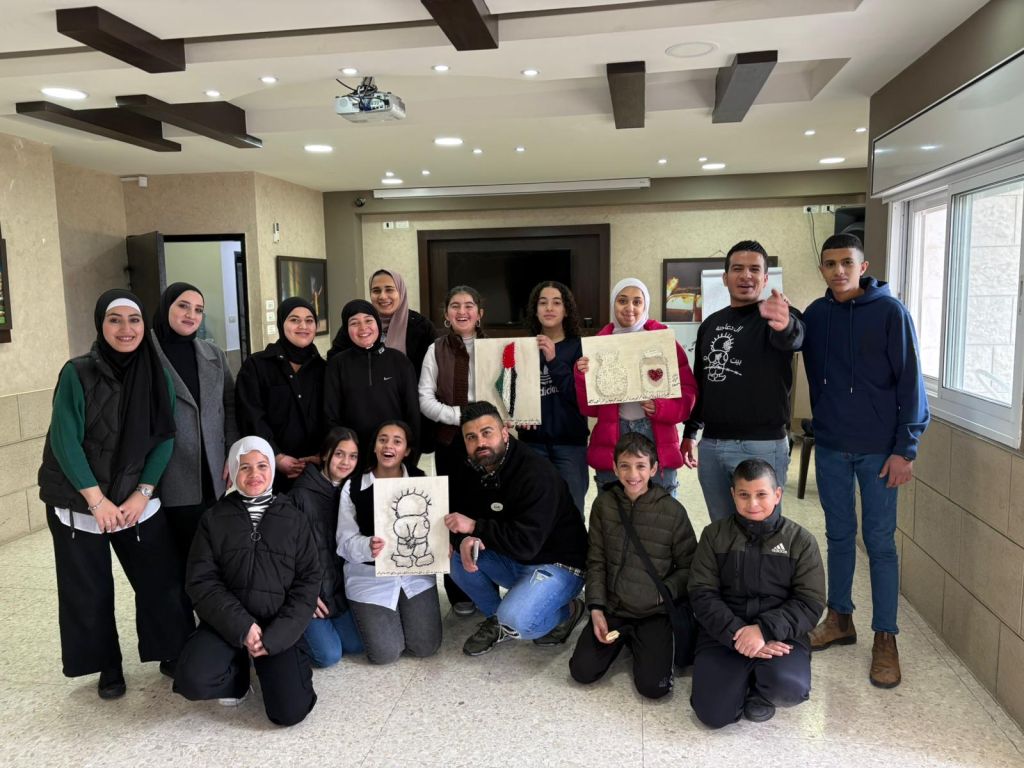
As part of the third day’s activities, the Health and Environmental Unit organized a trip to Mar Saba Monastery, east of Bethlehem. The children enjoyed the natural beauty of the area while taking part in cultural and environmental activities. They also prepared a traditional Palestinian meal, Galayet Bandora (tomato stew cooked over fire), fostering a spirit of teamwork and collective engagement.
On the fourth day, the camp featured a recreational activity alongside an awareness lecture on environmental conservation. The session covered the importance of protecting natural resources, key eco-friendly behaviors, and ways to address local environmental challenges.
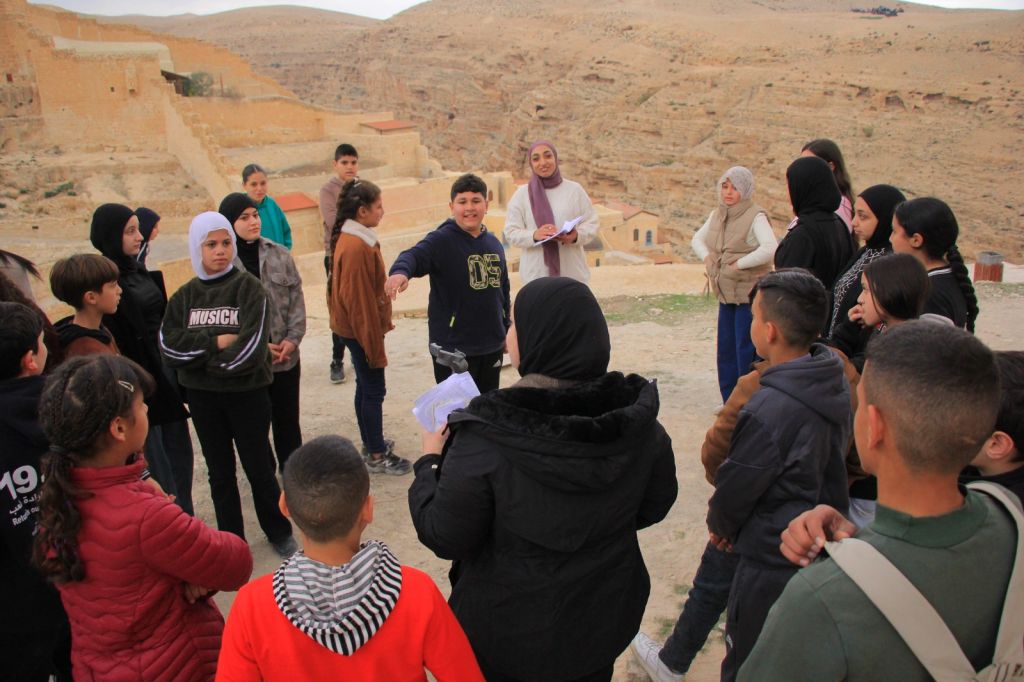
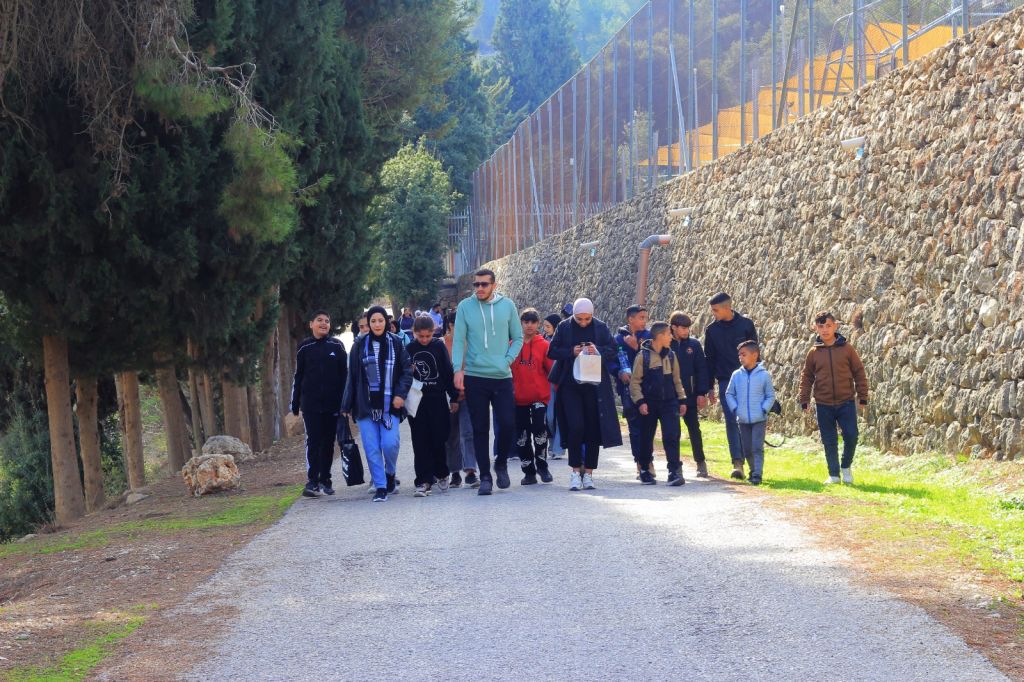
On the final day, the camp concluded with a trip to Cremisan Monastery in Beit Jala, a site under threat of confiscation. The children learned about the area’s environmental significance and its historical and cultural importance. Additionally, they participated in a session prepared by fellow campers, where they presented information about the martyrs and prisoners from Aida Refugee Camp.
The closing activities included various recreational events in the scenic surroundings of Cremisan, bringing the camp to a memorable and engaging conclusion.


